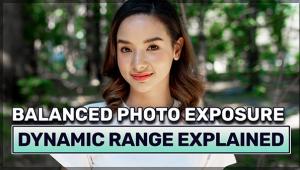X-Rite’s Pulse ColorElite; Color Manage All Your Input And Output
Monaco has long been known for their color management solutions. Their EZcolor
product is often bundled with, or offered at a reduced price with products such
as printers and scanners and it has a reputation for being easy to use, accurate,
and affordable.
Monaco is now owned by X-Rite, and while the name may have changed, the ease
of use and quality certainly haven't. I recently took a look at their
Pulse ColorElite system that measures all the digital input and output devices
you use.

Monitor Calibration
For monitor calibration the ColorElite includes the very good MonacoOPTIXXR
colorimeter. The device can profile CRT, LCD, and laptop displays, while the
software can be as simple or complex as you like. Most people will be perfectly
happy with the easy settings, requiring only a few button clicks to completely
profile their display. For the control freak in us all, the software allows
you complete control over contrast, brightness, and ambient lighting, creating
a profile that is completely customized to your work environment. You could
even create multiple profiles for different lighting conditions in your work
area, switching to the correct one as needed.
Depending on the method you select for profiling your monitor, the device will
either prompt you to adjust the brightness and contrast of your display or go
directly to the measuring step. While the simple profile-only step generates
a very good profile, for extra precision you'll want to use the Calibrate
and Profile option. Going this route, you'll select both the lighting
of your work area and the white point you want to use. After setting the contrast
and brightness to match the optimal settings shown in the software, the measuring
is done.
The ColorElite isn't the fastest monitor profiling solution I've
used but it does generate a very good profile when completed. I found that with
my LCD displays I had to ignore the recommended setting for Contrast as it was
too low. This wasn't a problem with the CRT display I profiled though,
and in both cases the generated profile had perfectly neutral grays.




Printer Calibration
The Pulse can be used remotely and stores up to 10 profiles for later downloading--handy
for creating profiles for specific lighting conditions, and the included Pathfinder
makes scanning nearly foolproof. Although the software can be used with no understanding
of color management, additional tools are included to analyze and edit profiles
for complete control.
Calibrating your printer is a simple task of printing the target sample, which
can be done from within the ColorElite software or, by saving a TIFF file, from
your image-editing program, and then scanning it with the Pulse. After printing
the target, place the Pathfinder over the target as instructed and begin to
scan each line. The PULSE uses sound and color to let you know if there were
problems reading the color bars. The entire operation is quick and easy, taking
less than two minutes to scan a full target and save the resulting profile.
Since the Pulse has its own internal memory that will store up to 3000 patches
and can run from battery power (without the accessory kit, the Pulse battery
recharges when connected to the USB cable), you can scan the targets anywhere
to tune the profile for those particular lighting situations. When you get back
to your computer, plug the Pulse into a USB port and instruct the software to
create the profile. This is a very nice feature and one I haven't seen
in other products, and one I found myself using more than I expected.
I created profiles for the Canon PIXMA iP8500, Epson Stylus Pro 4000, and HP
Photosmart 8750 printers. In every case the new profiles resulted in prints
that were more accurate with better tonal range than the generic profiles supplied
with the printer.
The ColorElite software can also be used to edit profiles you've already
created. Using either the provided sample or your own image, you can adjust
Curves for Lightness and Saturation as well as the Red, Green, and Blue output
Curves. This is the easiest method of making profile adjustments I've
seen.
Typically I make them in Photoshop after doing a Convert to Profile and choosing
Proof Colors.
- Log in or register to post comments

































